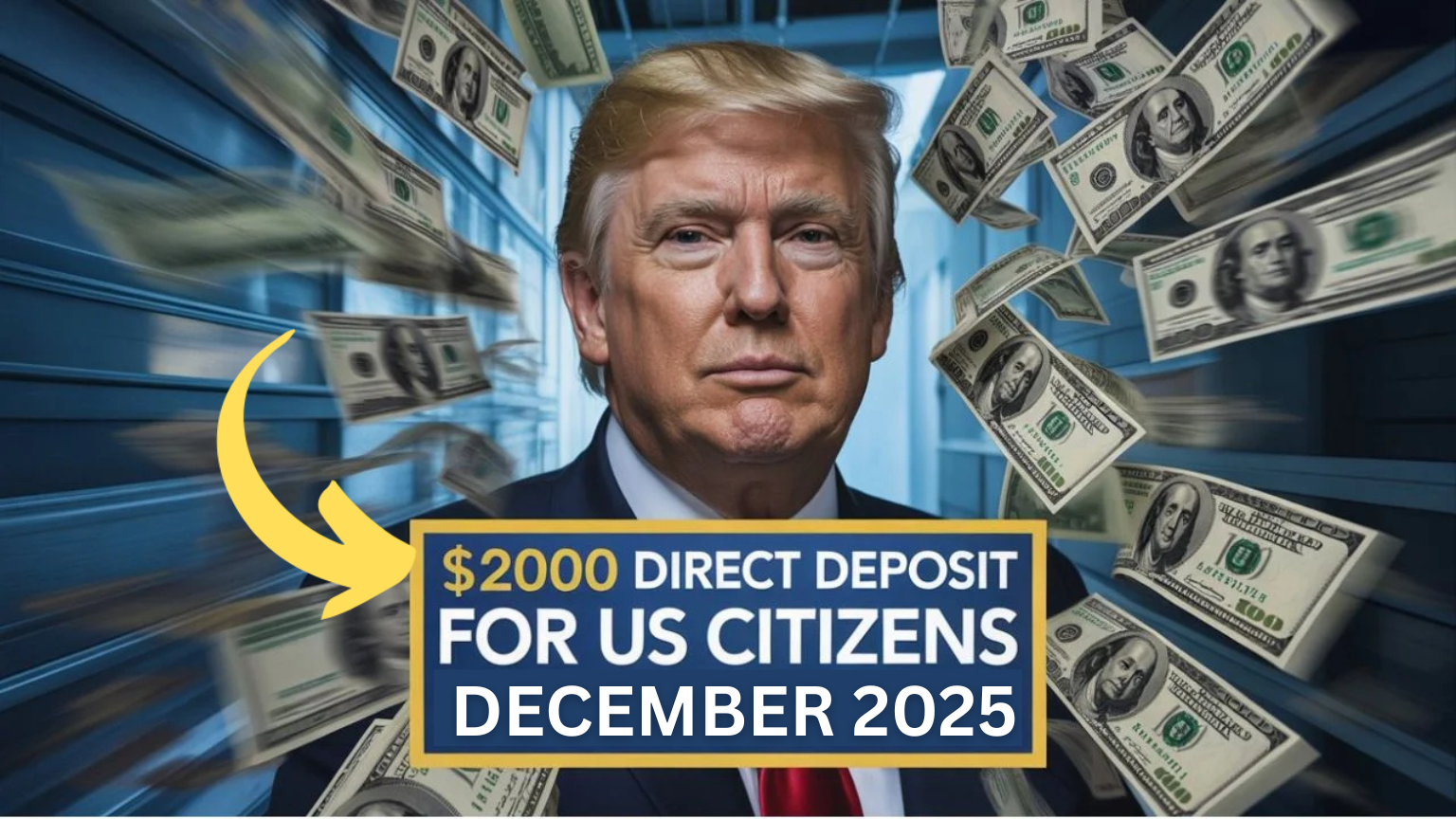$2,000 Federal Direct Deposit :The cost of living remains high for American families, leaving many families searching for reliable financial support as 2025 approaches. Given these ongoing challenges, policymakers are discussing a $2,000 federal direct deposit payment in November 2025. While the proposal is still under review, the idea has garnered significant attention nationwide—especially among the elderly, low-income workers, people with disabilities, and families struggling with high inflation.
This guide details everything we know so far about the November payment, including who can qualify, how the IRS will distribute funds, and what steps Americans should take to prepare.
Why payments are being considered in November 2025
Economic conditions will not be the same in 2025. While some industries have experienced steady growth, many households are still feeling the effects of previous years’ inflation. Prices for groceries, rent, car insurance, utilities, and medical care remain higher than expected, and wages have not yet fully increased.
These factors have forced lawmakers to reconsider the idea of direct financial relief. The proposed $2,000 payments aim to:
- Help families prepare for year-end expenses
- Help older adults and disabled Americans living on fixed incomes
- Stimulate the economy ahead of the holiday season
- Ease the financial burden caused by cold weather and rising heating costs
While no final decision has been made, discussions indicate strong interest in some form of year-end financial assistance.
Who Could Be Eligible for the $2,000 Payment?
Although details remain under development, lawmakers have indicated that eligibility may closely resemble earlier federal stimulus programs. Based on these models, the following groups are the most likely candidates:
1. U.S. Citizens and Legal Residents
To qualify, individuals would need:
-
A valid Social Security number
-
U.S. citizenship, permanent residency, or qualifying legal status
2. Income Requirements
Income caps commonly used for earlier federal payments may be applied again. These include:
-
Single filers: up to $75,000
-
Head of household: up to $112,500
-
Married couples filing jointly: up to $150,000
Those with slightly higher incomes might still receive a reduced amount.
3. Recent Tax Filers
The IRS will likely use 2023 or 2024 tax returns to determine eligibility. Filing ensures the agency has accurate income, address, and direct deposit information.
4. Federal Benefit Recipients
Previous relief rounds automatically included:
-
Social Security retirement (SSA)
-
Social Security Disability Insurance (SSDI)
-
Supplemental Security Income (SSI)
-
Veterans Affairs (VA) beneficiaries
-
Railroad Retirement recipients
Because these groups often rely on fixed incomes, they are expected to be included again if the payment is approved
How will Payments be Delivered?
If approved, the IRS and U.S. Treasury will distribute payments using existing systems. This ensures the fastest processing and broadest coverage.
1. Direct Deposit (Fastest)
Most eligible Americans will receive their funds automatically through direct deposit. This method often results in payments within a few days of issuance.
2. Paper Check
Those who don’t have direct deposit can receive a physical check in the mail. This process typically takes several weeks.
3. Prepaid Debit Cards
In previous relief rounds, some payments were issued on debit cards to simplify distribution. That option may return depending on logistics.
When Will Payments Arrive?
Although November 2025 is the targeted month for distribution, the exact date depends on:
- Legislative approval
- Treasury funding schedule
- IRS processing timeline
If the program is approved by early fall, direct deposits could begin arriving in accounts in mid- to late November, followed by checks.
How Americans Can Prepare Now
While payments aren’t guaranteed, you can take a few simple steps to ensure you’re prepared if they do happen:
1. File all outstanding tax returns
The IRS cannot issue payments without recent tax records.
2. Update direct deposit information
If your bank account has changed, update your information on your latest tax return or through the IRS online service once it’s opened.
3. Confirm your address
Having a current address prevents delays in paper checks.
4. Avoid scams
The IRS never calls, texts, or emails asking for personal information. Rely only on IRS.gov for official updates.
5. Follow government announcements
Any confirmed decision will come directly from the Treasury Department or the IRS.
Frequently Asked Questions (FAQs)
1. Is the $2,000 November 2025 payment officially approved?
No. It is a proposal currently under discussion.
2. Will everyone receive the full $2,000?
Eligibility and payment amounts may vary based on income, filing status, and other factors.
3. Are seniors and disabled individuals included?
Most proposals include SSA, SSDI, SSI, VA, and Railroad Retirement beneficiaries.
4. Will I need to apply?
Most payments would likely be issued automatically based on IRS records.
5. Will the payment be taxable?
Historically, federal relief payments were not taxable. A similar approach is expected but not confirmed.
6. What if I didn’t file taxes?
The IRS may offer a non-filer tool, depending on the final structure of the program.

